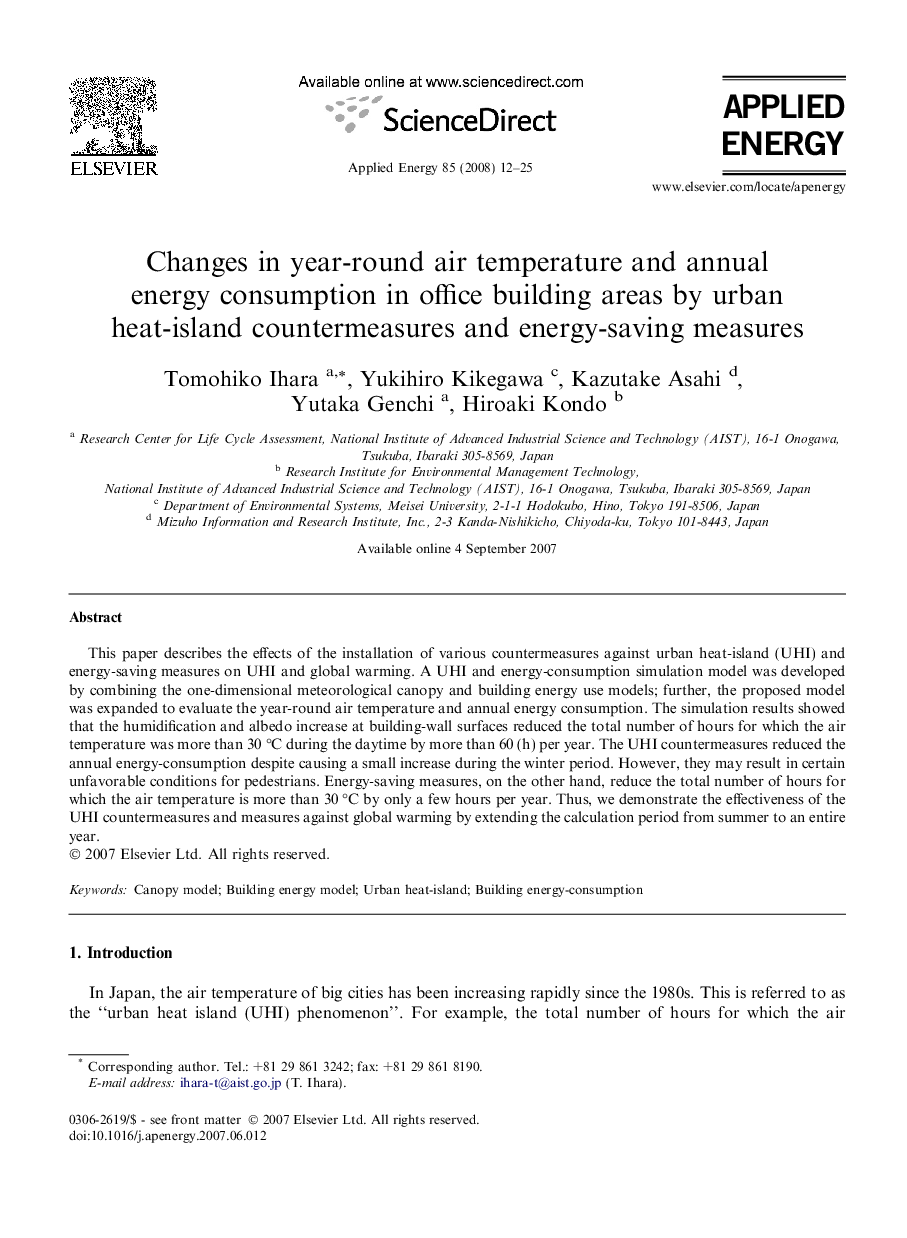| Article ID | Journal | Published Year | Pages | File Type |
|---|---|---|---|---|
| 245179 | Applied Energy | 2008 | 14 Pages |
This paper describes the effects of the installation of various countermeasures against urban heat-island (UHI) and energy-saving measures on UHI and global warming. A UHI and energy-consumption simulation model was developed by combining the one-dimensional meteorological canopy and building energy use models; further, the proposed model was expanded to evaluate the year-round air temperature and annual energy consumption. The simulation results showed that the humidification and albedo increase at building-wall surfaces reduced the total number of hours for which the air temperature was more than 30 °C during the daytime by more than 60 (h) per year. The UHI countermeasures reduced the annual energy-consumption despite causing a small increase during the winter period. However, they may result in certain unfavorable conditions for pedestrians. Energy-saving measures, on the other hand, reduce the total number of hours for which the air temperature is more than 30 °C by only a few hours per year. Thus, we demonstrate the effectiveness of the UHI countermeasures and measures against global warming by extending the calculation period from summer to an entire year.
